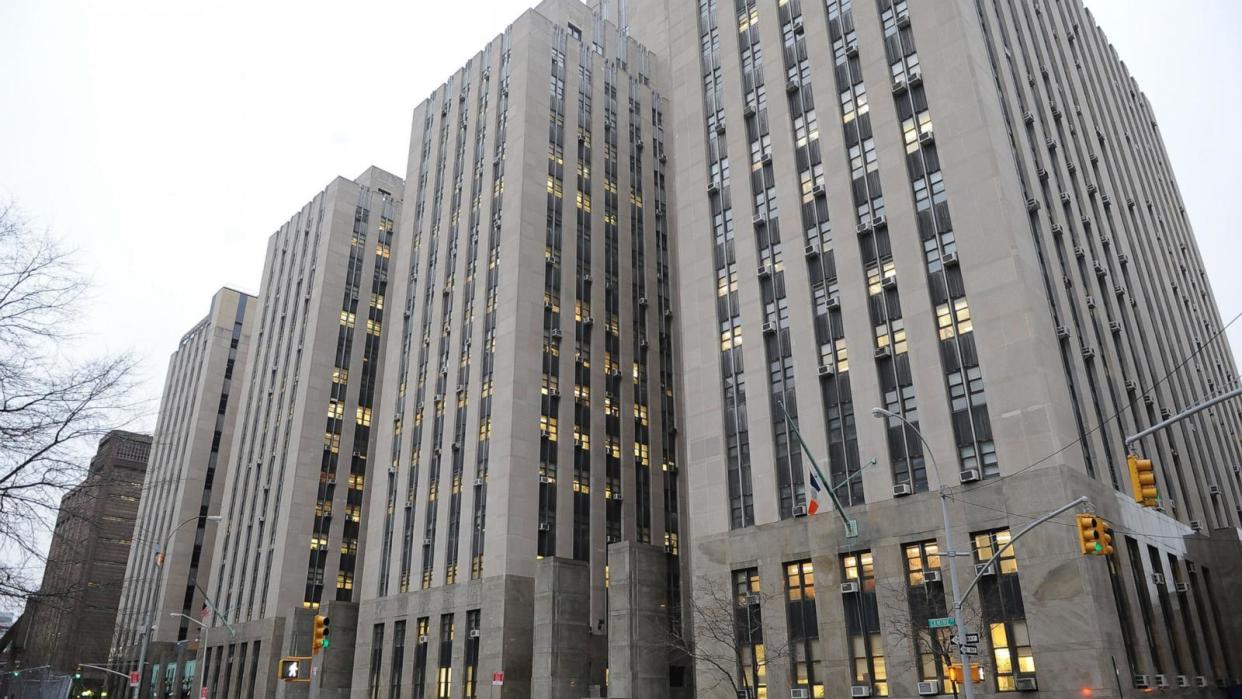The storied history of the New York City courthouse where Trump now stands trial

When former President Donald Trump walks into 100 Centre Street each day of his criminal hush money trial, he enters a courthouse with a storied history dating back more than 80 years.
Located just feet from Foley Square, the Manhattan Criminal Courthouse sits in view of several other important legal buildings -- including some where Trump has recently faced litigation.
Just a 5-minute walk from 100 Centre Street stands the federal court building where in January Trump was ordered to pay $83.3 million to E. Jean Carroll for repeatedly defaming her.
Right next door is the New York County Supreme Courthouse, where Trump lost a civil fraud case brought by New York Attorney General Letitia James and was fined $454 million.
Robert Pigott, an adjunct professor at Fordham University School of Law who gives walking tours of the area, noted the significance of where this historic trial is playing out.
“For 30 years, Donald Trump has been a very litigious businessman, and he’s been in a lot of these courthouses regularly,” he said. “But now for the first time just this past year, when I get to Foley Square, I can point to three different courthouses where as the former president he was engaged in litigation.”

Since it opened in 1941, the halls of the art deco Manhattan Criminal Court building have hosted murderers, dissidents, mob bosses, con artists and movie stars.
In 1964, Beat Generation comedian Lenny Bruce was convicted there on obscenity charges stemming from a performance at a Greenwich Village nightclub. He served four months in Rikers Island, the city's jail, but received a posthumous pardon in 2003.
Mark David Chapman, who fatally shot John Lennon outside The Dakota apartment building in 1980, pleaded guilty to the murder in 1981 in the same courthouse.
The courthouse is where Harvey Weinstein was found guilty of rape and sexual assault in 2020 in one of the most defining moments of the #MeToo movement -- and on the same floor where Trump now stands trial. Last Thursday morning, just before testimony in Trump's case continued, Weinstein's conviction was overturned.

Anna "Delvey" Sorokin -- the notorious “Soho scammer” who posed as a German heiress and stole hundreds of thousands from wealthy New Yorkers, businesses and banks -- was convicted there in 2019.
A number of A-list entertainers have also had their cases heard at 100 Centre Street, including Alec Baldwin, Jonathan Majors, Cuba Gooding Jr., Amanda Bynes and Lil Wayne.
Trump himself has his own tangential ties to the courthouse. The Central Park Five -- the five Black and Latino teens falsely accused of raping a white woman -- were found guilty there in 1990.
Their conviction came after Trump took out full-page ads in four major newspapers calling for New York to legalize the death penalty in connection to the case. Their attorney has said the ads “poisoned the minds” of New Yorkers, possibly influencing the ruling.
In 2002 -- in the same courthouse where they were wrongfully convicted more than a decade earlier -- the five men were exonerated. As recently as 2019, Trump has refused to apologize to them.

But 100 Centre Street has been an important legal landmark long before the current courthouse was built. Over a century earlier, the “Halls of Justice” -- a courthouse and temporary detention center more commonly called “The Tombs” -- was built was built near that site in 1838.
The Tombs, believed to be nicknamed for its Egyptian Revival architecture style, was best known as a jail. It’s where millionaire Harry Thaw, who shot architect Stanford White for having an affair with his wife Evelyn Nesbit, was held while awaiting trial in 1907 and 1908.
Charles Dickens toured The Tombs in 1842, which he wrote about with abhorrence in his travelogue, "American Notes for General Circulation."
“Why, such indecent and disgusting dungeons as these cells, would bring disgrace upon the most despotic empire in the world!” Dickens wrote.
The storied history of the New York City courthouse where Trump now stands trial originally appeared on abcnews.go.com

 Yahoo News
Yahoo News 
